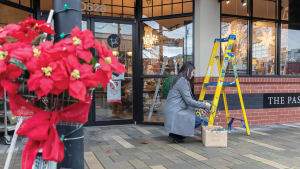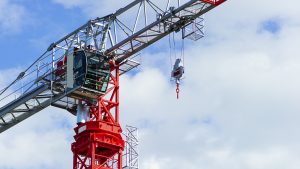RICHMOND, B.C. – says the risks associated with crane use in B.C. are rising as more and more projects get underway, and as such new recommendations have been released in the hopes of keeping sites safe.
In July 2021, a tower crane collapse in Kelowna, B.C. took five lives and several related incidents happened earlier this year including the loss of one life at the Oakridge Park site in Vancouver.
In March 2024 WorkSafeBC brought together a group of 130 crane-sector stakeholders, including tower crane operators, employers, prime contractors, rental companies, labour representatives and the to “identify and address gaps in crane safety,” a WorkSafeBC release said.
“Following a comprehensive review of crane safety, and informed by stakeholder input and feedback, we’ve developed a risk-reduction strategy with recommendations aimed at further improving tower crane safety in B.C.,” WorkSafeBC head of prevention services Todd McDonald said in a statement.
The recommendations include:
- Reviewing the existing crane operator certification program to ensure it supports safe work.
- Exploring how to improve the training and skills of supervisors, riggers and workers involved in the assembly, operation, disassembly or repositioning of cranes.
- Reviewing options for employers responsible for the assembly, operation, disassembly or repositioning of tower cranes, including registration and licensing.
- Increasing staffing and capacity of WorkSafeBC’s specialized crane inspection team.
- Developing new regulations to address the frequency of tower crane inspections.
- Reviewing and updating the Occupational Health and Safety Regulation – including regulations related to cranes and rigging – to ensure they meet the needs of increasingly complex worksites.
- Ensure the BC Association for Crane Safety is equipped to service and support workers and employers in the sector.
“Crane safety is a priority for WorkSafeBC. With a greater number of cranes operating in increasingly complex worksites, we need to ensure that employers provide the training, supervision and safe-work practices needed to keep workers safe in an evolving work environment,” McDonald added.
WorkSafeBC prevention field services senior manager said Suzana Prpic said in the immediate future the organization will look at the training and skills aspect of crane operation and that supervisors had “very vocal comments relating to assembly, disassembly or repositioning of tower cranes. Those are three key areas.”
She added sites with tower cranes are complex and need ongoing planning.
WorkSafeBC will be discussing these recommendations with the B.C. Ministry of Labour, SkilledTradesBC and industry stakeholders, including labour, employers, and the BC Association for Crane Safety in coming weeks, the release said.
“The BC Association for Crane Safety is actively partnered with WorkSafeBC and its prevention team in support of the enhanced crane strategy, ensuring safe and effective crane, hoisting and rigging operations throughout the province,” stated BC Association for Crane Safety executive director Clinton Connell.
“We’re focusing on a lot of what we have in place with careful analysis on where we need to focus so we can target and have the highest impact on areas that are of concern to our stakeholders and to us,” Prpic said.
“We’re continuing to do our planned crane team inspections across the province. Last year we did over 1,200 inspections with 200 or so that were response-related, but the balance were proactive and unannounced. That’s where we really work with employers with very detailed inspections and work with them on every angle of their safety management to make sure it’s strong and supports safe work practice.”
WorkSafeBC conducted a review of tower crane incidents through worksite inspections following a 2019 crane collapse in Seattle, Wash. and revisited it after the Kelowna crane collapse in 2021.
In spring 2024 a new Notice of Project-Tower Cranes regulation was approved by WorkSafeBC’s Board of Directors. The new rules, which come into effect in October, state “every employer responsible for a tower crane activity at a workplace in B.C. must ensure that WorkSafeBC receives a written notice of project (NOP) at least two weeks before the crane activity starts. The NOP will allow WorkSafeBC to know who is qualified to perform the work, as well as when, where, and how this work will take place.”
There are approximately 400 tower cranes operating in B.C., the release said. And in 2023, WorkSafeBC’s Provincial Crane Inspection Team conducted 1,200 detailed inspections of cranes.











Recent Comments
comments for this post are closed